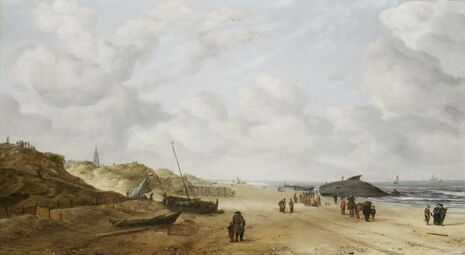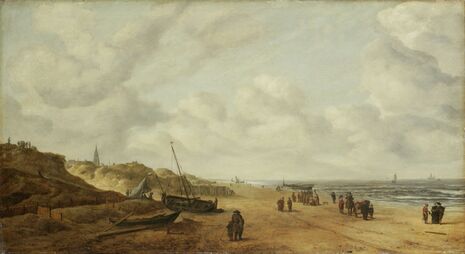Art student saves the whale
Restoration work at the Hamilton Kerr Institute uncovers stranded whale in 17th-century painting

How do you make an entire whale disappear? A discovery at the university's Hamilton Kerr Institute finds that just a few coats of paint will do the trick. Postgraduate student Shan Kuang was restoring a 17th-century painting for the Fitzwilliam Museum when she uncovered the giant mammal.
The original painting, entitled View of Scheveningen Sands by Hendrick van Anthonissen, was an unassuming depiction of people on a beach in the Netherlands during the winter. But recent restoration efforts by the Hamilton Kerr Institute, the art conservation branch of the Fitzwilliam Museum, have uncovered a stranded sperm whale on the beach.

Oil paintings are coated with a varnish that, over time, yellows and becomes darker; restoration work on paintings often involves removing this layer. However, whilst removing the varnish from this particular painting, Kuang discovered that “a figure started appearing standing directly on the horizon line [of the sea].” Soon thereafter the fin of the whale was discovered and was first thought to be the sail of a ship, but eventually the body of the stranded whale was fully revealed.
The uncovering of the whale suggests that a previous owner had the work of art repainted to remove the whale from the scene. Kuang explains that “in previous centuries, paintings were often elements of interior design that were adapted to fit certain spaces – or adjusted to suit changing tastes. It’s possible that the whale was removed because… without the whale the picture was more marketable.”
Kuang, alongside other conservators and the curators at the Fitzwilliam, made the decision to fully restore the original painting upon determining that the artist had not made the alterations himself. The conservators estimate that the alteration was made in the 18th or 19th century, and before the painting was donated to the Fitzwilliam in 1873. Hidden layers in oil painting are not uncommon. In February, researchers in the Netherlands used a non-intrusive x-ray technique to reveal several changes to one of the figures in a Rembrandt painting.
View of Scheveningen Sands is on permanent display in the Fitzwilliam Museum in the recently refurbished gallery of the Dutch Golden Age, which reopened on 3 June.
 News / Cambridge academics stand out in King’s 2026 Honours List2 January 2026
News / Cambridge academics stand out in King’s 2026 Honours List2 January 2026 Interviews / You don’t need to peak at Cambridge, says Robin Harding31 December 2025
Interviews / You don’t need to peak at Cambridge, says Robin Harding31 December 2025 Comment / What happened to men at Cambridge?31 December 2025
Comment / What happened to men at Cambridge?31 December 2025 News / Varsity’s biggest stories of 202531 December 2025
News / Varsity’s biggest stories of 202531 December 2025 Features / “It’s a momentary expression of rage”: reforming democracy from Cambridge4 January 2026
Features / “It’s a momentary expression of rage”: reforming democracy from Cambridge4 January 2026









